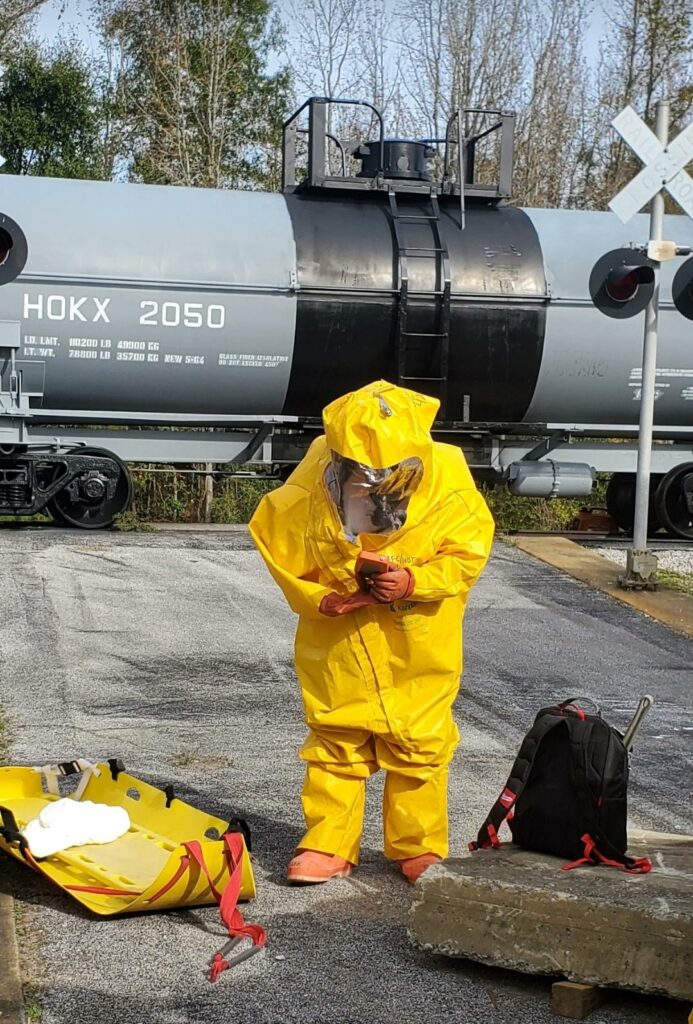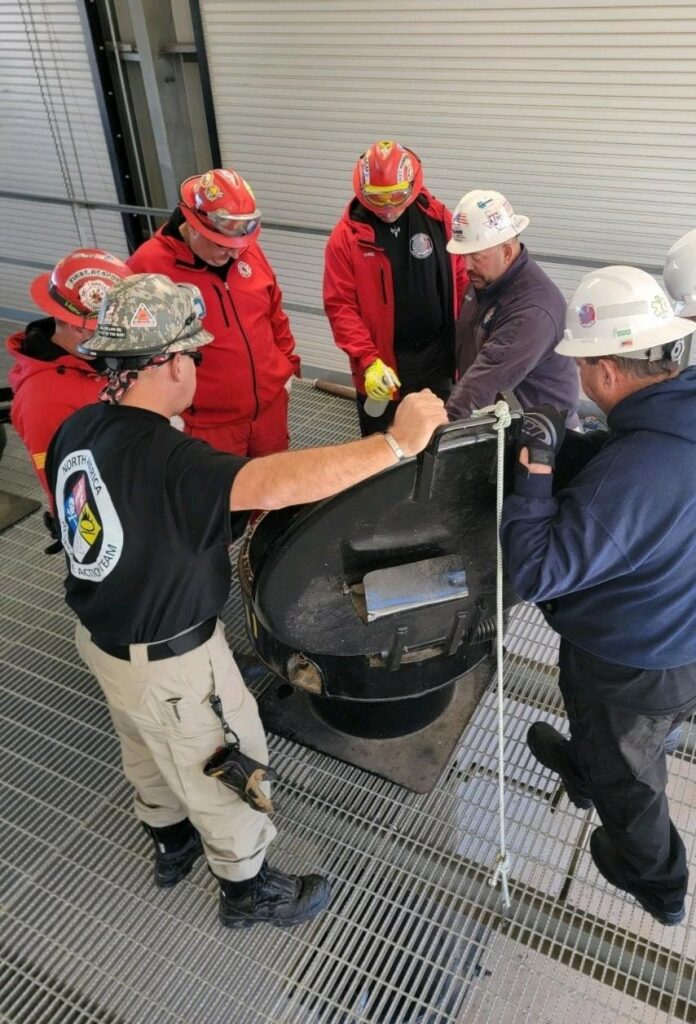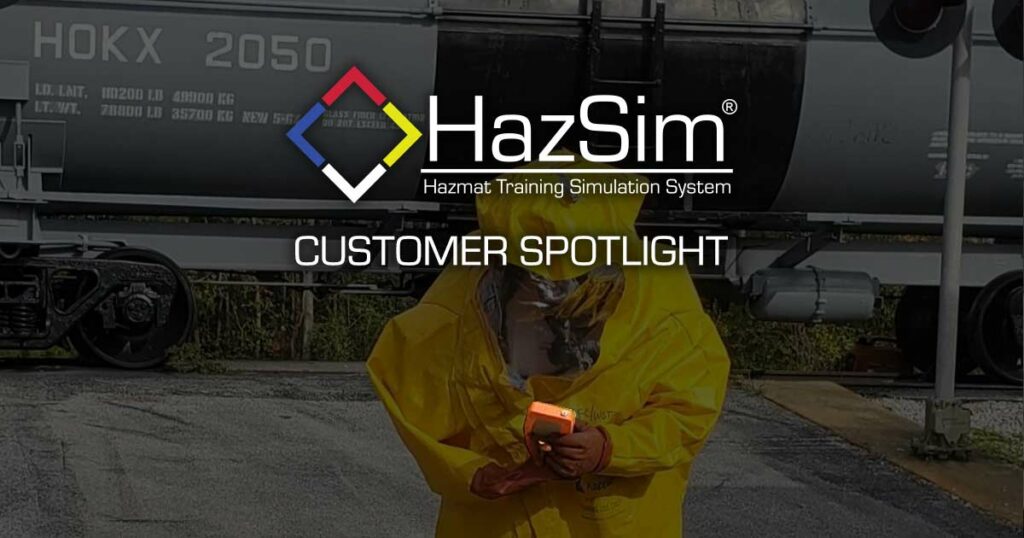Hazmat incidents involving rail cars don’t happen often, but when they do they are often major incidents. When fire departments and hazmat teams need to train for these incidents they often turn to the railroads for help.
And that’s a smart move, says Cristofer Burch. Lt. Burch is a 25-year fire service veteran who is Norfolk Southern Railway’s instructor manager for hazardous materials. He is in charge of emergency response, first responder training, train inspections, safety audits of railyards and anything else that may come up that is out of the ordinary.
We talked to Burch to learn his trade secrets for being a great hazmat instructor with this critical infrastructure.
Describe the type of students you train, how you train and the facilities you have at your disposal.
We teach a wide variety of personnel from police, fire and EMS to telecommunicators, environmental response contractors, LEPC groups, EMA to name some of the groups. We have classroom classes that we can go to a location to teach. We also have a training trailer with multiple tank car heads we can bring to departments for hands-on training. And our NS Safety Train that makes 15 to 18 stops a year throughout our system. The Safety Train has classroom capabilities along with tank cars and a flat car with multiple types of tank car heads for hands-on training. It also has a locomotive that we can walk through and use for a rescue scenario to remove injured railroad personnel.
How do you mix up the training scenarios so they don’t become predictable or stale?
The railroad hazmat world has so many different scenarios that can be used, you don’t have to use the same chemical or response more then a few times. We carry just about every chemical produced in the U.S. by rail, and each response to those chemicals are uniquely different.
Also Read: 3 Lessons From Recent Train Derailments
A lot of agencies ask for certain chemicals to train on. We pull a commodity flow study for an area to see what products run through a city or district to make sure the training is beneficial to them. It is better to train for something that runs through your district daily instead of one that may come through twice a year.
What’s the key to best preparing responders to handle real scenarios outside of the controlled training environment?
Getting them to understand it takes time. The fire service is a “get in and get it” profession. Hazmat is not a fast response. Making sure responders understand that you must take your time and find out as much information as you can before making entry is critical. Getting first responders trained that every hazmat response is unique is important. Emphasize the importance of knowing the correct information about a situation before deciding how to respond.
What is your biggest obstacle when conducting hazmat training?
Getting departments to understand it is needed. Fire departments train on so many things these days. Hazmat is one of those far and few between uses (for some), and sometimes it is overlooked by non-hazmat personnel. Even non-hazmat personnel at a fire department can benefit from our training by learning what to do and not to do in a situation involving an issue on rail. Not all railroad responses involve hazmat.
What wicked training problem keeps you up at night?
My biggest problem is misinformation that is out there. A lot of so-called experts use outdated information or teach things that are not true. All Class 1 railroads offer free updated training that can be used by first responders.
What would it take to solve it?
Having first responders reach out to local railroads to ask about training and how to set it up. Getting this training straight from a Class 1 railroad makes sure it’s the correct and most updated training. I wouldn’t ask a fire truck builder about which SCBA to use in a fire.
What devices do you rely on most for realistic training?
NS Hazmat has been using HazSim for a couple years now. Having a working piece of equipment that we can adjust to conditions for hazmat teams during training is vital. Using a turned off detector or block of wood with “gas detector“ written on it isn’t realistic. Being able to adjust what the meter is reading gives it a realistic effect that helps first responders adjust response and tactics in real time.
How, if at all, do you alter training for new responders versus seasoned veterans?
We offer a few different classes from basic response information to advanced hazmat classes. The RR 101 class is a good class, and every few years a refresher is always a good idea. I have taught classes with first responders that have been through three or four of these type classes. And most say they learned something new. That’s what we must do to make sure we get buy-in from departments to get us on the training schedule.
How do you keep the classroom portion of hazmat training fresh?
All of us at one point or another have had a trainer spend 25 minutes talking about themselves, or those instructors that read word for word off a PowerPoint. We keep the classroom part interactive and moving along. We use new videos and slides so it’s not the same old thing. Classroom training is a must, but our team does a good job of covering the main topics and moving on. Most of our discussion takes place during the hands-on part.
What’s the optimum class size and why?
For the classroom part, we can handle an unlimited number. But for the hands-on part, it’s best to keep the groups around six to eight people per station. With our Safety Train, we split the class into three groups to limit the size per station. That way you can stay engaged with the students and not have a lot of just standing around.
As a hazmat instructor, what’s been your biggest “ah-ha” teaching moment—the one that changed how you teach?
Remember what it was like being a student. I have sat in classes with instructors who are more worried about self-promotion than teaching. Then, they move on to war stories; some response stories are beneficial to understanding. As a student, you lose interest quickly, and they never really get you back. So as instructors, we must see that and not repeat it. Teaching isn’t easy and takes years to feel comfortable doing it. Students are there to learn and be interactive with the instructor. Keep the class moving and keep students engaged by talking with them.
What role does technology play in how you teach hazmat and what do you think the future holds for it?
Technology is something we as instructors must grasp and accept. Having tools like HazSim gives us the ability to use this technology for hands-on training; to give them that real-life scenario is very important for training.
What important advice did we not cover?
Never stop learning in this business. Keep learning until the day you retire.



